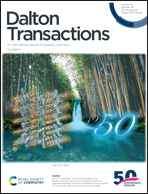Ru doping induces the construction of a unique core–shell microflower self-supporting electrocatalyst for highly efficient overall water splitting†
Abstract
Since the large reaction energy barrier caused by multi-step electron transfer processes of the hydrogen evolution reaction (HER) and oxygen evolution reaction (OER) gravely restricts the practical application of electrocatalytic water splitting, it is urgent to develop a dual-functional electrocatalyst which can effectively reduce the reaction energy barrier and actually speed up the reaction. Herein, the Ru species are doped into the complex of magnetite and FeNi-layered double hydroxide by a one-step oil bath method, and a self-supporting binder-free bifunctional electrocatalyst was synthesized on the surface of iron foam (named Ru–Fe3O4@FeNi–LDH/IF). The unique 3D core–shell microflower structure of Ru–Fe3O4@FeNi–LDH/IF, the combination of active ingredient and conductive substrate, together with the doping of Ru may immensely provide a large number of active sites, adjust the electronic structure, accelerate electron transfer, and thus greatly improve the electrocatalytic activity and durability. It is worth mentioning that when Ru–Fe3O4@FeNi–LDH/IF is used as the anode and cathode for overall water splitting, only 1.52 V battery voltage can generate a current density of 10 mA cm−2, and also maintain a prominent stability for at least 36 hours. This work provides a feasible strategy for heteroatom-doping LDH as a bifunctional electrocatalyst.



 Please wait while we load your content...
Please wait while we load your content...